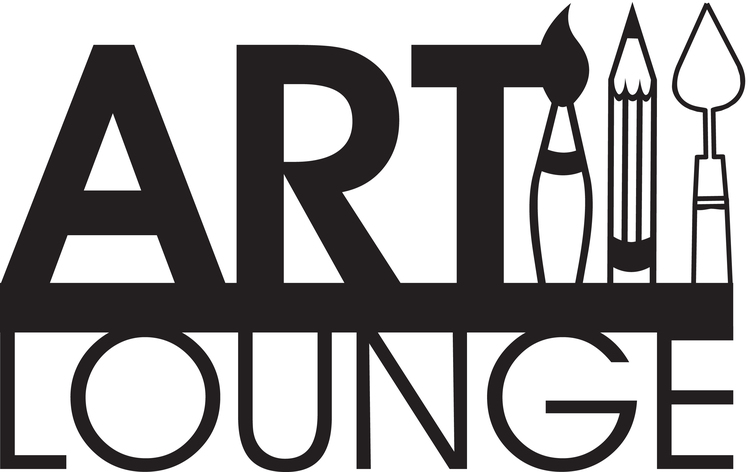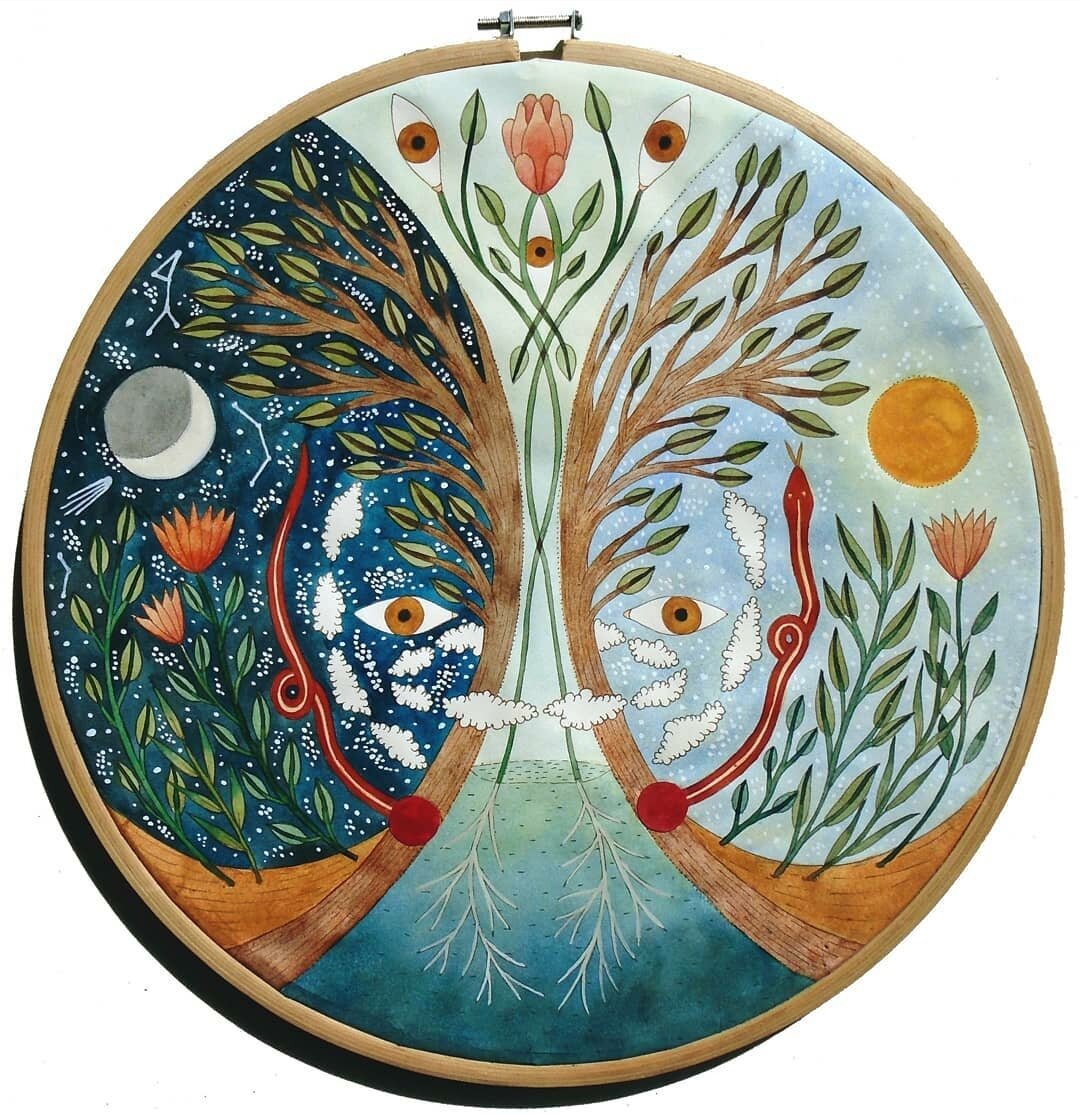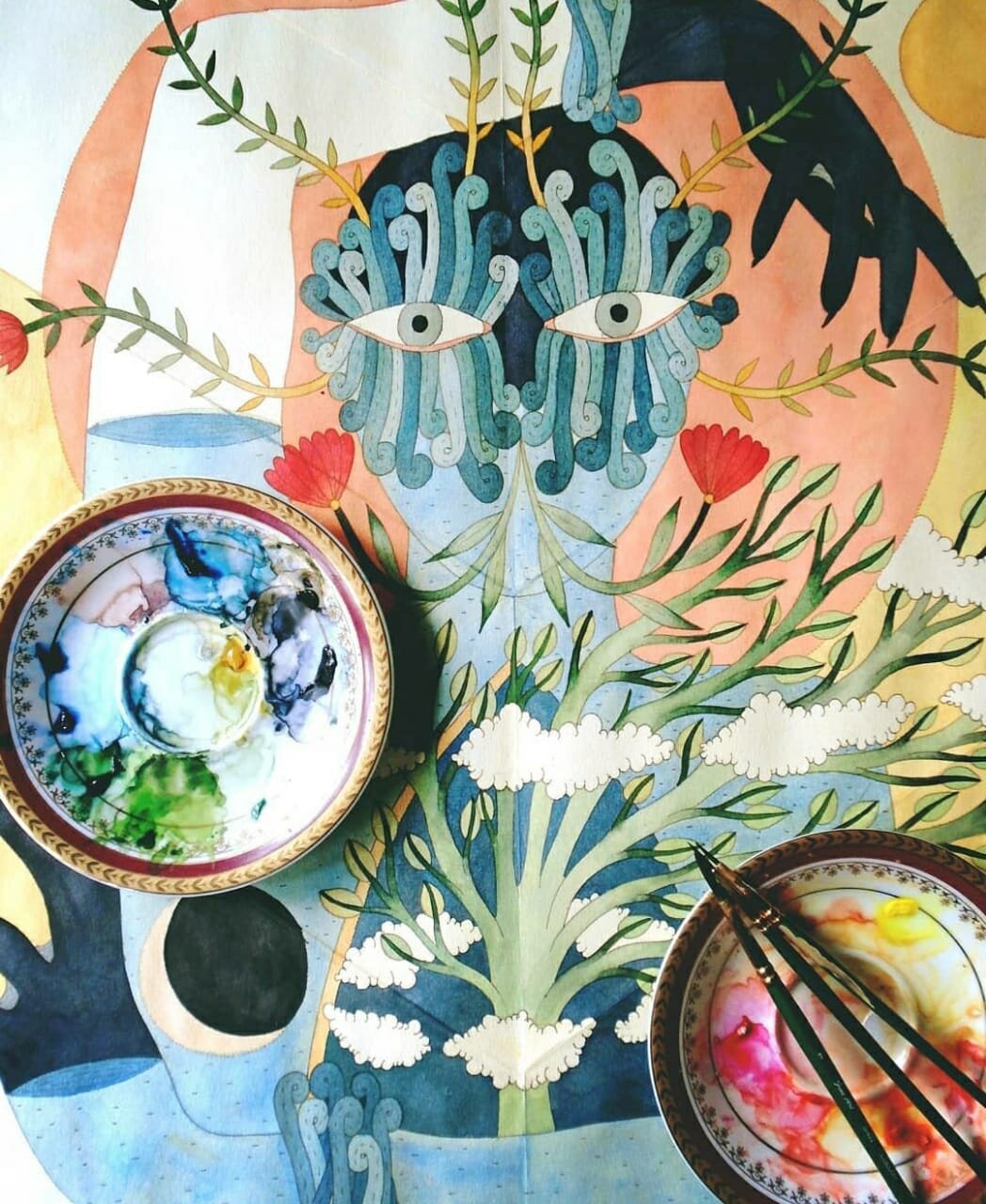What made you want to be an artist? were there phases you went through or did you know that was exactly what you wanted to do?
I have been artistically inclined from a young age and my parents were always very supportive and encouraging of my need for artistic expression. Both my parents are Doctors and although neither of them are artist, Art was always a part of the discussion, they would take me to see art exhibitions in the city and really try to educate me and expose me to art. As a child I remember drawing and painting with my mother and always being encouraged to express myself creatively. I always knew I wanted to be an artist. It is not really something I can quantify in words, but there really is nothing else I want to do.
In 2004 when I was 18, I moved to New York City to attend Parsons The New School of Design, and I graduated in 2008 with a BFA in Fine Arts. My experience there was amazing. It really shaped the way I make art today. The Fine Arts program at Parsons favours the conceptual aspect of art making as opposed to the technical aspect. They also require that you take an art history course and some elective courses. For me this was great, because the ideas and the process of making art is much more important to me than having the perfect painting. I was able to explore and experiment with many different things before I came to the place where I make the work that I do now.
Do you think where you grew up and went to school has an impact on your art?
The combination of having grown up in India, studied in the U.S.A. and then travelled extensively and finally settled in Europe is the reason for my interest in the links between cultures. I've been lucky enough to able to explore different cultures and witness them. Both Europe and India have such a mixture of different traditions, it has helped me see parallel histories everywhere. The history of myth and traditions shows links between cultures that often isn't highlighted in classical history.
Rithika in her studio
Your work has a lot to do with mythology and migration. What fascinates you about this? do you relate to these topics in some way?
I have always been very interested in narratives, myths and received histories that are available to us. I am also interested in how these different fragments are “woven” together to from a complete image. Most cultures use imagery to tell stories and represent ideas. I try to use these ancient means of storytelling in a more contemporary context.
My most recent show “Where the water takes us” brings together a body of work that explores issues of migration, displacement, and belonging through the idiom of epics and myths. The mass displacement of people, forced migration, and the dislocation and exile of many groups of people all over the world are very troubling to me. Living in Barcelona I have felt very helpless watching the European refugee crisis unfold right on my doorstep. This show dealt with the profound effect this has had on me. I hope that through my work the audience is able to have empathy and awareness about what is going on in the world today.
What is your favorite myth/story that you have painted?
I find Creation Myths to be the most compelling. These myths are found in almost all human cultures. They are almost always set in a far away and very non specific past and always feature a lots of different characters; many of who transform from human to animal or vice versa. I find these myths very meaningful because they can tell you a lot about the identity and worldview of the society of which it speaks.
The myth of the Visha Kanya is another myth which I find significant. According to the myth which dates back to the Mauryan Empire, young girls were made poisonous by exposing them to low intensity poison from a very young age. They would develop immunity to the poison and their body fluids would become poisonous, hence any sexual contact with them would be lethal. They would then be used as assassins against powerful enemies.
How was the Chloé collaboration for you? How did the regular experience of making pieces for an art show differ from these prints you did for Natacha Ramsey Levi? was there a story behind them?
This collaboration came out totally by chance. Natacha was browsing the internet and pulling images and she came across my work. She really liked my work and said that it fit what she had in mind for the "painted dresses". It was totally out of the blue for me and a very nice surprise! Within a week or two we had chatted on Skype, I had been briefed on the scope of the project and that was it. They invited me to come to the studio in Paris to work with them on the dresses, and so I spent about 2 weeks there working with Natacha and the rest of the team to place my drawings on the garments.
I also really liked Natacha and we got along well! I liked working with her because she is very laid back but she also knows exactly what she wants. She is super open and was very welcoming to my creative opinions and input too. She is also very clear about her vision so It was easy to incorporate any feedback she gave me.
The prints I worked on for this collection are filled with lots of esoteric and spiritual symbols and botanical imagery. The prints are much more graphic and bold than the work I typically make. We also adapted the prints to fit each garment uniquely.
What are your favorite mediums?Have you always used them? why? (What about them appeals to you?)
I primarily work with gouache, watercolour and ink on paper. I love watercolour because when you work with it you kind of have to mean it. You can’t paint over it or take it away. There is a finality with working with this medium that I really like. I also like that it’s less saturated, more faded and sort of translucent.
Aesthetically, I like desaturated colour, in the vein of old maps, and botanical drawings. I find religious iconography interesting. I enjoy colour and paper that looks like it has been exposed to the sun and the way paper and ink looks after it’s been folded up and put away for all long time
When you decide on a topic, does that influence your medium?
Not really, but sometimes my work can be much more process driven, where the medium shines through a bit more. In the last year I have been experimenting with collage. My collages began from a need to express certain ideas in a graphic non narrative way. These works come from a much more personal and intuitive way of seeing. Less about research and more about taking a feeling or concept and representing it visually.
What tips would you give to young artists who are starting out?
People tend to romanticize what artists do - but being an artist is a profession just like any other that requires a lot of hard work, patience and a thick skin. It’s a massive risk as well and there are constant ups and downs. You have to be very committed to it. The best piece of advice I have gotten is to just show up and work on my art every single day even if I don’t feel like it - to constantly hone my craft, to be committed and to make things happen for myself.
Rithika working on her project in back 2016






